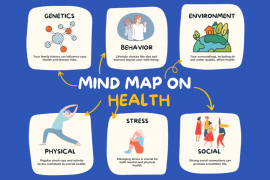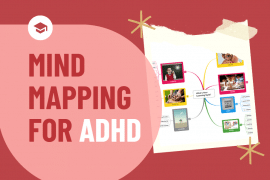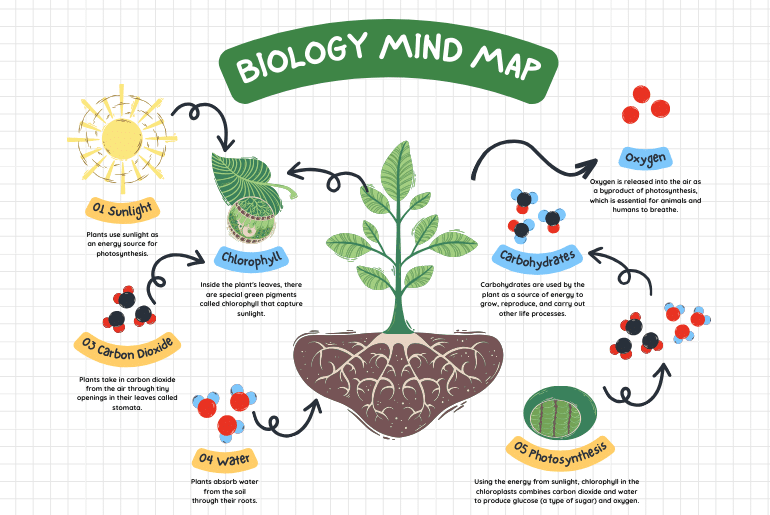
In the vast landscape of education, particularly when grappling with intricate subjects like biology, the search for effective learning tools and techniques is a never-ending quest.
One such tool that has garnered significant recognition and has proven to be a game-changer for learners is the biology mind map.
Every biology classroom, from grade school to grad school, is filled to the brim with complex ideas and dizzying charts. In this knowledge-rich environment, the biology mind map emerges as a transformative tool, simplifying the intricate web of concepts and making the learning journey smoother and more engaging.
Biology, the study of life in all its magnificent forms, from the microscopic world of cells to the complex ecosystems of animals spanning our planet, demands more than just memorization of facts. It necessitates a profound understanding of the interconnectedness of organisms and nature through various concepts and processes. This is precisely where biology mind maps shine.
Visualizing Complexity
Biology encompasses a plethora of important topics, from the intricacies of the cell cycle to the incredible diversity of life within the plant kingdom. Concept maps serve as a visual canvas where these multifaceted concepts and organisms can be systematically organized, interconnected, and easily comprehended.
By representing information visually, mind maps break down complex biological relationships, making them not only easier to understand but also more memorable.
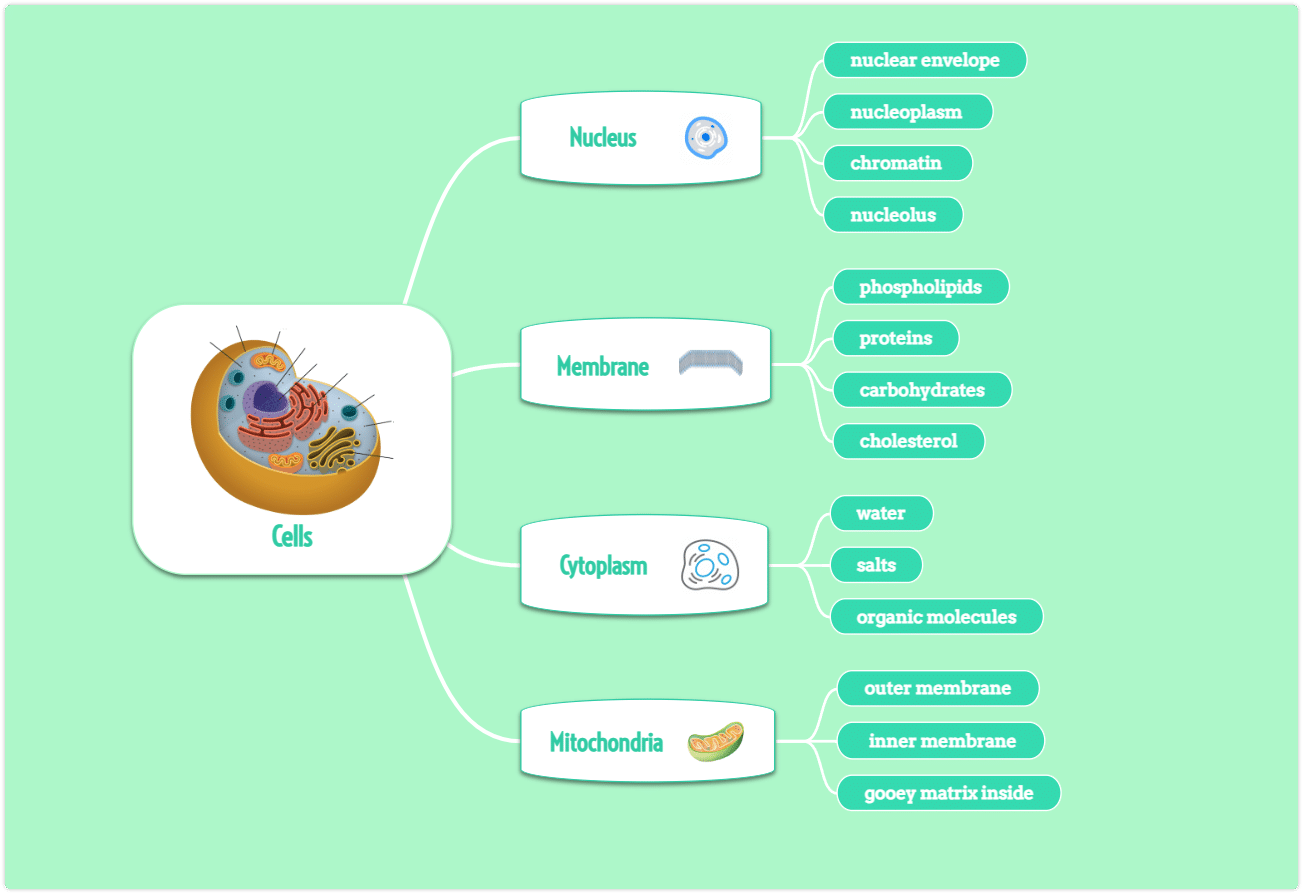
Enhanced Retention
Education mind maps leverage our brain and body’s inherent inclination for visual learning. When information is presented in a structured, colorful format, our brains and body are naturally inclined to remember it more effectively. In biology, where even the minutest details can be crucial, this heightened retention becomes an invaluable aid in understanding and retaining key information.
Efficient Studying
Time is often a precious commodity in the world of education. Mind maps, with their condensed yet comprehensive format, allow students to cover a broader spectrum of information in less time. This efficiency makes mind maps and concept maps ideal tools for preparing for rigorous exams like NEET, where vast amounts of information need to be absorbed and retained.
Practical Examples of Using Biology Mind Maps
Now, let’s explore in greater detail how you can harness the power of biology mind maps to master key topics:
1. Cell Cycle Simplified
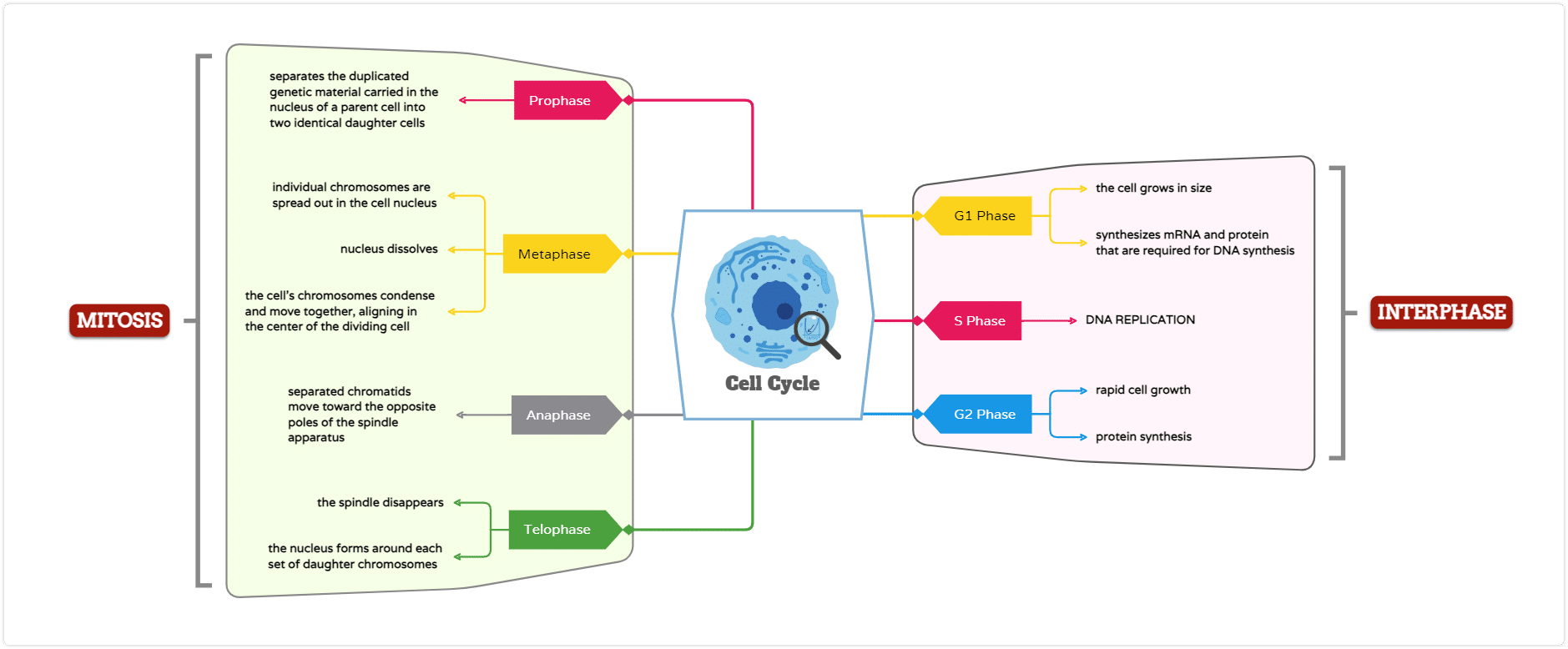
The cell cycle is a fundamental concept in biology, but its phases and intricacies can be overwhelming for many students.
A biology mind map can be a lifesaver in this scenario. Start a science mind map by creating a central branch representing the cell cycle. Then, add branches for each phase – G1, S, G2, and M – and fill in details about key proteins involved, DNA replication, and checkpoints for each phase. This visual representation simplifies the cell cycle and aids in thorough understanding.
2. Plant Kingdom Diversity
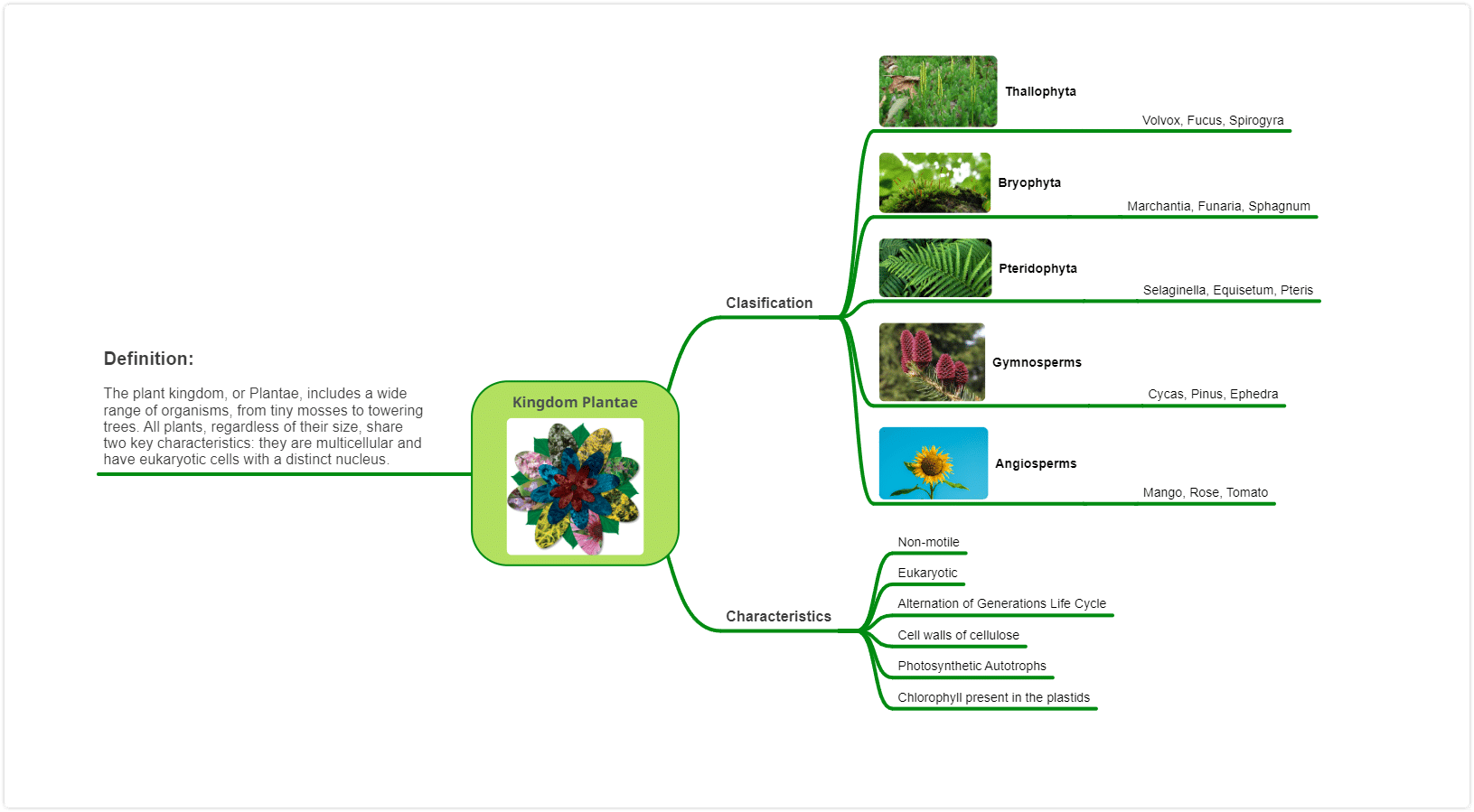
The plant kingdom is a realm of incredible diversity. When studying plants on this topic, a mind map can be your best friend.
Begin with the main branches for different plant types, such as angiosperms and gymnosperms. Then, delve into their characteristics, life cycles, and differences. This visual approach helps you grasp the rich tapestry of the plant kingdom, making it easier to differentiate between various plant types.
3. Body Systems Unraveled
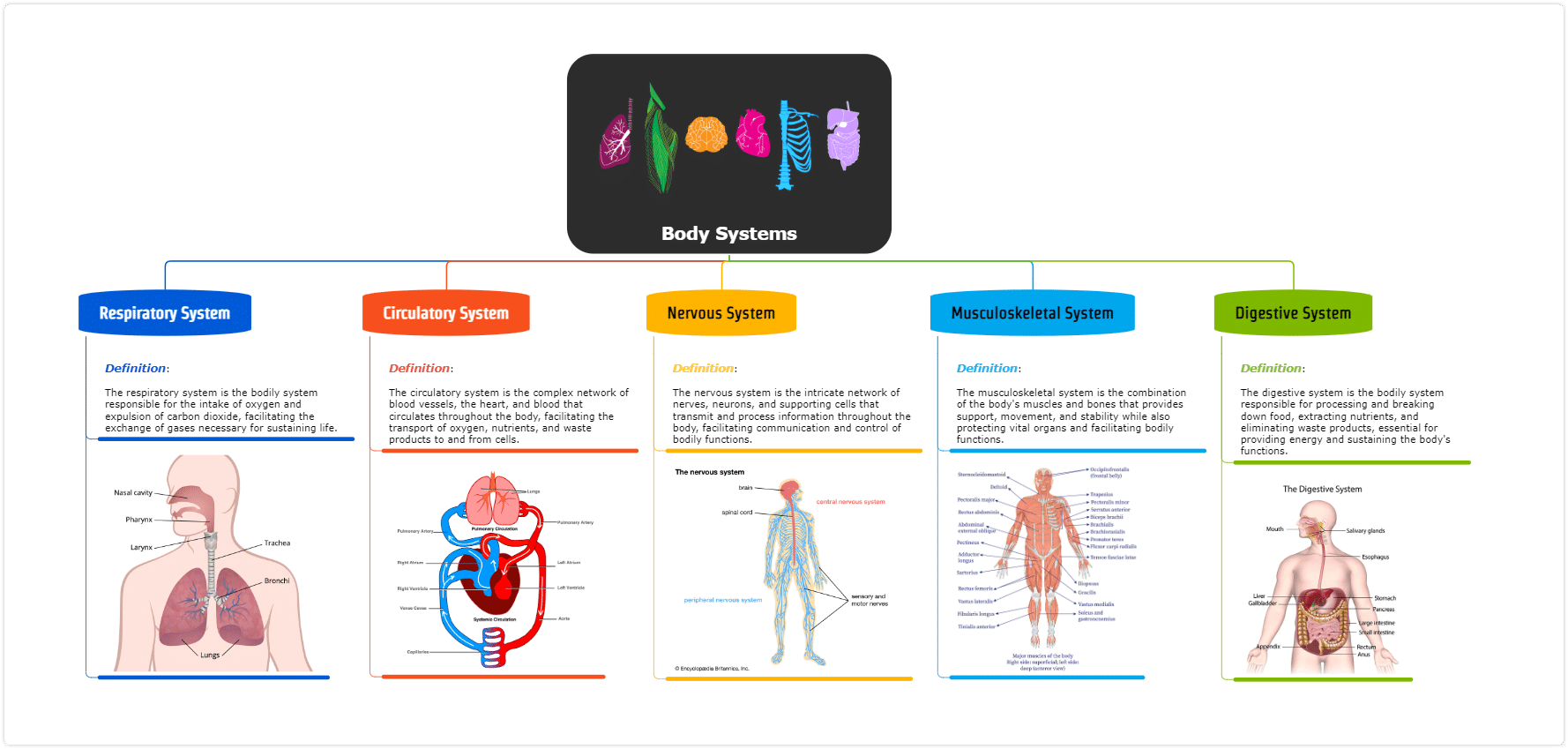
Biology encompasses a deep dive into the various body systems, from the circulatory system to the nervous system.
A biology mind map can assist in breaking down complex systems into manageable parts.
Start with a central branch for the system you’re studying, like the digestive system. Then, add branches for organs within that system (e.g., stomach, intestines), their functions, and key processes like digestion and nutrient absorption.
This visual representation simplifies complex systems and facilitates in-depth understanding.
4. Bacterial World Explored
When studying living organisms like bacteria, a mind map can help you differentiate between the various types.
Create branches for different bacteria, with details based on their characteristics, habitat locations, and roles in the natural world. This visual approach aids in memorization and assessment, ensuring you can easily distinguish between different types of bacteria.
5. DNA Deconstructed
DNA is the foundation of life, but its structure and functions can be intricate.
Craft a mind map starting with the DNA molecule at the center. Then, branch out to its components, such as nucleotides, base pairs, and the double helix structure.
Add explanations for how DNA replicates and functions as the genetic code of life. This visual representation simplifies the molecular world of DNA, making reading it accessible and easily comprehensible.
The Power of Biology Mind Maps in Education
Biology mind maps offer a refreshing and highly effective approach to mastering this intricate subject. By simplifying complex topics, enhancing retention, and streamlining study efforts, mind maps have become a boon for students seeking success in biology and related exams.
So, the next time you dive into the world of biology, consider creating a mind map. It’s like having a visual roadmap to guide you through the fascinating journey of life sciences, and it can truly make a world of difference in your learning experience.
Additional Benefits of Biology Mind Maps
Beyond simplifying complex topics and enhancing retention, biology mind maps offer a multitude of benefits for learners:
1. Active Learning
Creating an education mind map requires active attention and engagement with the material, promoting a deeper understanding of biology concepts and helping students better retain information.
2. Conceptual Clarity
Mind maps help clarify complex relationships, allowing students to see the big picture and the intricate details simultaneously.
3. Effective Revision
When it comes to preparing for revision, knowledge maps are invaluable. They provide a condensed overview view of the subject, making it easier to review and recall information quickly.
4. Exam Preparation
Mind maps can be created to serve as a comprehensive study aid, helping students prepare effectively for biology exams like NEET.
5. Visualization of Progress
As you learn to build a mind map, you can visually track and assess your progress in understanding the subject, which can boost motivation and confidence.
Creating Biology Mind Maps: Tips and Tricks
To make the most of your data and biology mind maps, consider these essential tips:
1. Choose the Right Topics
Select a specific topic or concept within biology to create a mind map. This will ensure a focused and comprehensive visualization of important topics.
2. Gather Your Resources
Collect all the required materials and resources you need to understand the required topic thoroughly, such as textbooks, notes, and online resources.
3. Set the Stage
Find a quiet and comfortable space where you can concentrate on creating your mind map.
4. Start with a Central Idea
Begin your mind map with a central idea or the main topic you want to explore.
5. Branch Out
Create this article that branches from the central idea, adding subtopics, keywords, examples, and key concepts as you go along.
6. Use Visuals
When you organize information visually, it’s essential to incorporate visuals like images, diagrams, and symbols to enhance and make your mind map visually engaging and memorable.
7. Color Code
Use colors to differentiate between different branches and elements within your mind map. This aids in organization and comprehension.
8. Be Concise
Keep your mind map concise and focused on the essential concepts. Avoid overcrowding it with excessive details.
9. Review and Revise
Periodically revisit and revise your mind map as you learn more about the topic. This keeps it up-to-date and reinforces your understanding.
10. Share and Collaborate
Consider sharing your mind map results with peers or educators for feedback and collaborative learning.
Save and Organize
Save your digital mind maps for easy access and reference during your studies (Mindomo saves your diagrams automatically, and you can access them anytime, anywhere).
A New Era in Biology Learning
Biology mind maps are the ultimate learning hacks for teachers, offering a refreshing and effective approach to mastering this intricate subject.
By simplifying complex topics, enhancing retention, and streamlining study efforts, mind maps have become a boon for students seeking success in biology and related exams.
So, the next time you dive into the world of biology, consider creating a biology mind map – it’s like having created a visual roadmap to guide you through the fascinating journey of life sciences.
Keep it smart, simple, and creative!
The Mindomo Team




